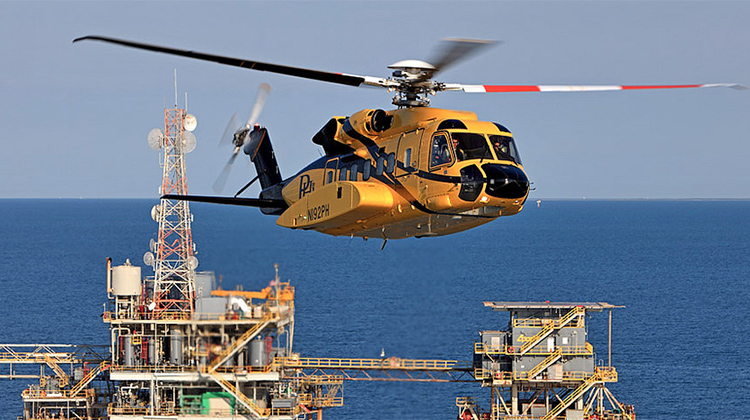
The US Federal Aviation Administration (FAA) has issued yet another emergency airworthiness directive (AD) requiring urgent inspections of the tail rotor pitch change shaft (TRPCS) assembly bearings on the global Sikorsky S-92 fleet.
This latest AD, published on January 13, follows the Lockheed Martin-owned manufacturer’s January 10 Alert Service Bulletin (ASB) requiring all operators of S-92As to undertake one-off inspections of the TRPCS and bearing assemblies which were required to be performed before the next flight.
Additionally, operators were required to perform a specific check of the Health and Usage Monitoring System (HUMS) data.
The FAA said its latest emergency AD (2017-02-51) was prompted by three reports of operators losing tail rotor control caused by a failed TRPCS assembly bearing.
After the first two incidents, the FAA issued an emergency AD on December 28 2016 which applied only to S-92As with TRPCS assemblies that had less than 80 hours time-in-service with bearings that were manufactured prior to November 3, 2016.
Since then, reports of a third S-92A losing tail rotor control, which coincidentally occurred on December 28 2016, prompted a preliminary investigation by the FAA which determined the TRPCS assembly bearing failed despite having more than 80 hours time-in-service.
In that incident, the helicopter lost tail rotor authority and spun while landing on an offshore platform in the UK’s North Sea. The helicopter, involving a CHC-operated S-92A, landed safely and shut down with no injuries to the passengers or crew.
“We have determined that the unsafe condition can exist on TRPCS bearings regardless of hours time-in-service,” said FAA manager, Rotorcraft Directorate, Aircraft Certification Service, Lance Gant. “Therefore, this emergency AD applies to all TRPCS assemblies.”
The latest directive again requires a one-time visual inspection and then repetitive borescope inspections of the TRPCS assembly bearing to detect a binding bearing to prevent loss of tail rotor control and the possible loss of control of the helicopter.
While stressing that the S-92s were not grounded, the TRPCS inspections have caused temporary disruptions for offshore operators particularly in the North Sea, where S-92As have been used extensively due to the continued grounding of Airbus Helicopters’ H225 and AS332 L2 Super Pumas by the UK and Norway.
“Safety is our number one priority and Sikorsky is working closely with our customer and investigative authorities to determine the root cause of the loss of tail rotor authority,” said Sikorsky in a statement. “We have communicated additional guidance to S-92 operators regarding HUMS usage and will continue to provide information as it becomes available.”
In August 2007, the FAA also issued an AD for inspecting S-92A tail rotor pitch change shaft and bearing assembles.
















Corey Dark
says:Will this delay the US Marines contract to replace the VIP fleet commonly known as Marine One? I would hope they get this fixed and fixed right if they want the Marine Once contract!